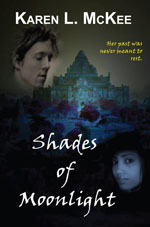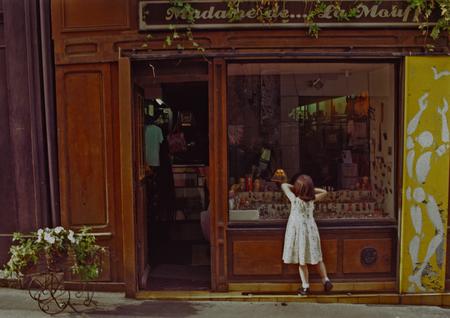Prepping for the Market
This post is on preparing your novel/story for the e-market. I’m not talking about the formatting required to put a novel on Amazon or Smashwords, I’m talking about what you need to do after you complete the manuscript, but before you begin the Smashwords or Amazon process. To make this of the most value to the most people, I encourage readers to please share what you’ve found worked for you.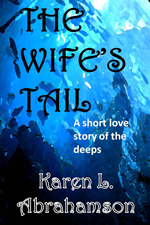
Editing –
Of course you edit. We all learned to do this before we sent a manuscript to the traditional publishing world, but the stakes are a little different in the indie-e-publishing world. In the traditional publishing model, writers sent the best manuscript they could manage to an editor and it was that editor’s task to make sure that the book was the best it could be before it went out into the world for readers to see.
In this new world of indie publishing, the writer is selling directly to the reader, and thus ensuring the book is ‘the best it can be’ is now the writer’s job. Sure, we all say our manuscripts are the best they can be, but if you talk to writers who have been through traditional publishing they will tell you things like ‘the editor didn’t just pick up on things I’d missed, they saw the possibilities I had failed to explore’.
Editors are the ones who suggest to writers that their manuscript would be better if they shifted points of view. Editors are the ones who point out, for a second book in a series, that you’ve changed from writing a romantic thriller to just writing a mystery. Why is this important? Because the readers who loved the first book in a series are going to be expecting the thriller in the second book.
So editors are our friend and we writers becoming indie publishers need to find a way to overcome the lack of an editor. This means that writers have to develop new skills and resources.
Not only must the writer complete their usual editing process, but they must also go one step further to ensure their book is ready for the reader. This means that the writer must cultivate first and second readers for their books. These readers need to have the skills to not only read for proofing, they need to read for things like (and this isn’t a complete list):
- Opening hook,
- logic,
- plot,
- character arc and consistency,
- consistency (e.g. character with blue eyes on page one, must have blue eyes on page 300), and
- whether the book fulfills its promise and the promise of the series.
Sometimes this can be accomplished through a critique group, but in my experience most critique groups are not at a level to critique a book in this way unless they are professional writers. If you do have access to a reader like this, whether they be a librarian/spouse, or a writer friend, cultivate them and listen to them like they’re gold and treat them very well. If it’s another writer, trade reading/editing with them. We can all use a friend with those skills.
If this option isn’t available, then an alternative is to pay an editor. No, I don’t mean going to one of the author service agencies I mentioned here, because they often expect to sell you a package of other services along with the editing. Nor am I talking about the services of a book doctor who might keep you revising your manuscript for years.
But there are other services out there. For example, Lucky Bat Books offers complete editorial and other services based on what the writer is looking for. Or check within your local writing community for writers who also provide editing services on a fee-for-service basis. Fee for Service means that you agree on the task and a price before the ‘editor’ provides the services and they DO NOT receive any royalties from your work. This is important as it could be a nightmare for the indie publisher to have to provide royalty payments and statements to an editor.
While this service will cost you, it pays in the long run. You’ll provide a professionally edited product to your readers, rather than alienating them due to numerous errors in the manuscript. Finally, even though your editor will provide you with a proofed copy and editorial comment, this doesn’t mean that you don’t still have to provide the manuscript one more read-through to make sure the manuscript is clean. Even after having one of my manuscripts well-edited, I found a continuity error no one else had picked up on.
Covers –
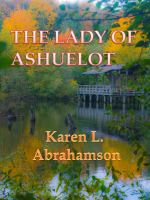
The bane of my existence and very important, because covers are (unless you are a known author) one of the most important ways to draw potential readers’ attention. I’ll discuss what makes a good cover in a future blog, but here I wanted to mention the importance of this and that you need to take the time to put a cover together. For e-publications, the easiest program for this is PowerPoint. You can change the slide size to 6-9 and then create a cover using photographs found on line and graphics provided by the program.
PowerPoint created all of my existing e-book covers using photographs either I had taken or that were available royalty free or free on the internet. If you are going to create your cover yourself, consider what you’ve written and what are strong images contained in your book. Go to bookstores or on line and check out the covers of the books that are in your genre. Often there are style conventions (some might say clichés) for the covers. For instance, Urban Fantasy often has the main female character in black leather standing before something indicative of the story setting. When you are designing covers, start well before you want to publish so that you can try different cover possibilities and get friend’s reactions. I had a cover designed for me and was pleased with it, but when a friend’s daughter saw it (and she was my target demographic) she just shrugged and said it ‘looked like a photo’. Back to the drawing board.
The alternative to creating covers yourself is seeking a cover artist. To find such a beast you can look at covers you admire and try contacting the artist, but this can cost many hundreds (or thousands) of dollars. The alternative is to look for graphic artists who are just starting out. This can be through your local art school or college and can give you the opportunity to work closely with the artist to sort out your vision. Like with editorial services, you want to conduct business on a fee for service basis so that the artist isn’t expecting ongoing royalties for the cover. Definitely set this out in writing.
If you are going with a graphic designer, make sure you give yourself enough lead time before your planned publication. Often preparing a cover can take an artist at least a few weeks, so while you’re doing your editorial reviews, get busy with the cover, too..
So like I said, creating a cover isn’t something you should do last minute. You spent a long time writing a book. You want it to sell. Spend the time to make sure your cover helps.
Blurb –
The blurb is what, in traditional publishing, you would find on the back of the book. In e-publishing, this is the description you’ll read on Amazon or Smashwords or Barnes and Noble that tells you what the book is about.
Let me emphasize that: It tells you what the book is about.
It should be short. It should be snappy and it should catch readers attention and make them go: “I’ve GOT to read this.”
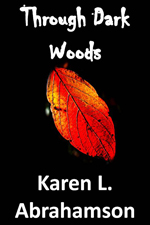 It should not give you a detailed look at the plot or the back story. I’ll talk more about blurbs in a future post, but suffice it to say that if you are starting to think about Indie publishing, start seriously reading the backs of books now. Start to get a sense of how blurbs hook you and try out those techniques for your book.
It should not give you a detailed look at the plot or the back story. I’ll talk more about blurbs in a future post, but suffice it to say that if you are starting to think about Indie publishing, start seriously reading the backs of books now. Start to get a sense of how blurbs hook you and try out those techniques for your book.
So what do you do to get ready to publish? How do you make sure your book is edited properly and what have you learned about producing a book cover or blurb, that might help the rest of us?

